SS Brioni
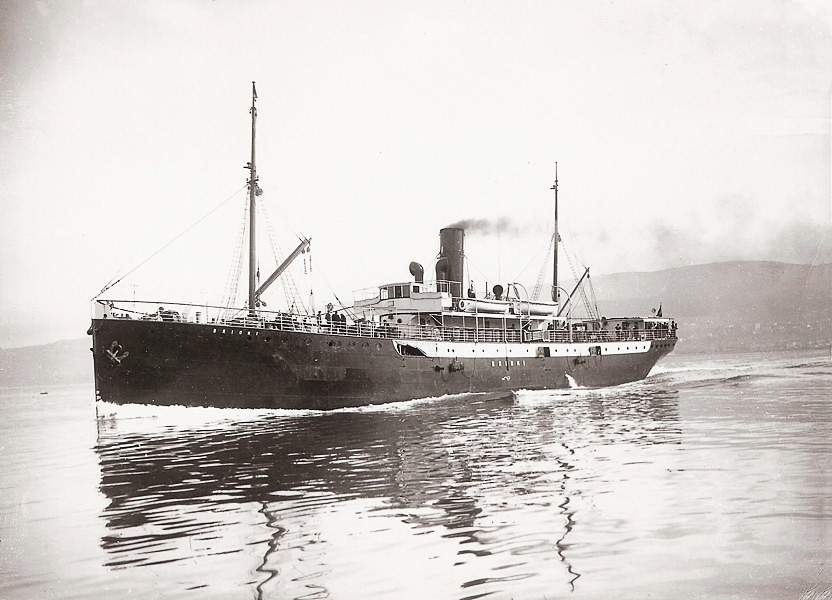
The Steamship Brioni was built for Österreichischer Lloyd of Trieste, as a mixed passenger-cargo ship, in the shipyard Cantiere Navale Triestino (CNT) in Monfalcone. The Brioni was launched in December 1909 and was to sail the coastal routes of the Adriatic, from Trieste to Dalmatia and Albania transporting passengers and cargo alike. Brioni was a typical coastal steamship of her day, small enough to access the sometimes compact ports of the Adriatic Islands and multi-purpose to make best financial advantage of trade and passengers to the benefit of her owners. Brioni would probably be best be described as “unremarkable” for all intents and purposes, a somewhat disingenuous term for such a workhorse, but as you will see, somewhat prescient…….
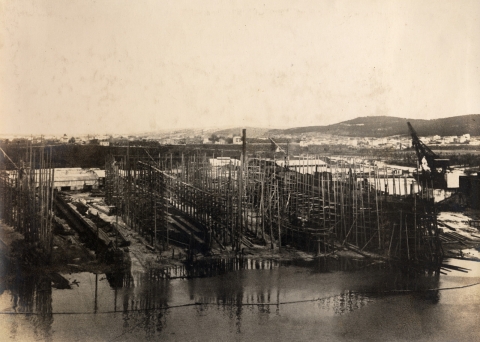
Even the yard which laid her keel and built her, 30 kilometres west of Trieste (on the shores of a somewhat unhealthy, recently reclaimed swamp at Panzano), on the seafront of Monfalcone, had little to commend it other than its availability, its proximity to a local workforce and the high price of ships from British Shipyards in a falling Austro-Hungarian economy. Brioni was a ship of her time, not built for the glamour of the Italian migration across to the America’s, and not yet the child of growing international tourism in the soon to become glamorous Adriatic archipelago’s, but a solid and functional steamship, as capable of carrying passengers to Constantinople as lumber and fine wines to Split, and the home ports of the Austro-Hungarian Empire. The decision to construct a shipyard on the Panzano seafront overlooked by Falcon Mountain (Monfalcone) was taken by the Cosulich Brothers of Mali Losinj, part of an Island chain south of the Istrian city of Pula, itself a port of call for Osterreicher Lloyd with a broad promenade and large natural harbor

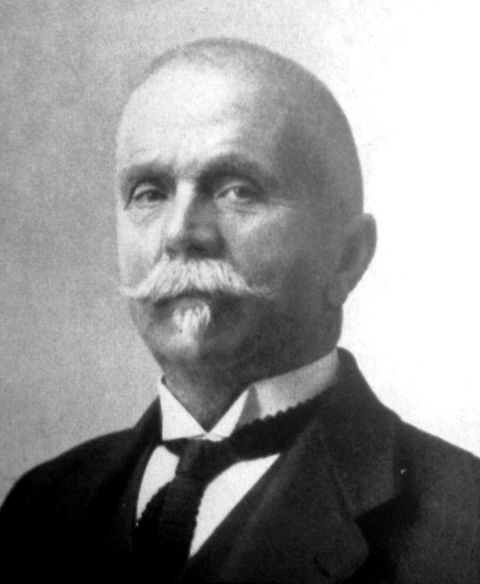
In 1852, the Cosulich brothers Antonio, Gaspare and Marco, bought the sail ships Gloria and Marco and ordered a third, two-masted sailing ship from a shipyard in Fiume, naming her Elena Cosulich after their mother. Fortune favoured the Cosulich family, the Crimean War had compelled the French and the English to charter almost any ship available in the region to support the campaign against Russia and the Cosulich ships were used, almost exclusively and at very high charter rates for almost two years, this income enabled the Cosulich brothers to add to their fleet and led to increasing success. With the opening of the Suez Canal in 1869, and now based out of Trieste (the leading trade city for merchants, insurers, ship-owners and everything connected with the shipping trades), the Cosulich Shipping line was going from success to success. By 1907, under the Cosulich brothers Callisto and Alberto, the Cosulich fleet consisted of 24 sea-going steamers and a harbour tug (Italianliners.com “Cosulich line, History” Online resource: Accessed 21/10/2021), but a worsening of international economic conditions, and a fall of the Austrian currency against the British pound, meant buying ships from the British shipyards was no longer economically viable, and the family decided to develop their own shipyard. Oscar Cosulich, Callisto’s son, and Arturo Rebulla, the mayor of Monfalcone, were school friends, Rebulla offered Cosulich the swamp at Panzano, on the seafront of Monfalcone, to be reclaimed to become the site of the Cosulich shipyard

Local contracting companies, Faccanoni and Adriatica, had excavated large basins there to recover earth for the construction of the port of Trieste (“Shipyard History, Cantiere Navale Triestino (CNT)” Online resource: muca.elemind.com/en/shipyard-history/ Accessed 21/10/2021) as the area was also close to the Valentinis Canal, with fresh water coming from the Dottori Canal, it made the area ideal for ship construction. On the 3rd April, 1908 the shipyard was inaugurated, becoming the Cantiere Navale Triestino (CNT). The Cosulich brothers were innovators and philanthropic too, they not only planned the shipyard but a company town complete with houses for married workers, hostels for unmarried employees, schools and even recreation facilities such as a theatre and sporting clubs. Monfalcone was very similar, it would seem, to Port Sunlight (1888) or Bourneville (1900) in England, and Cosulich even invited three Scottish managers from Russell & Co (the shipyard where many of their earlier vessels had been launched), to join them as managers, fitting out their workshops with the most high-tech machinery of the times
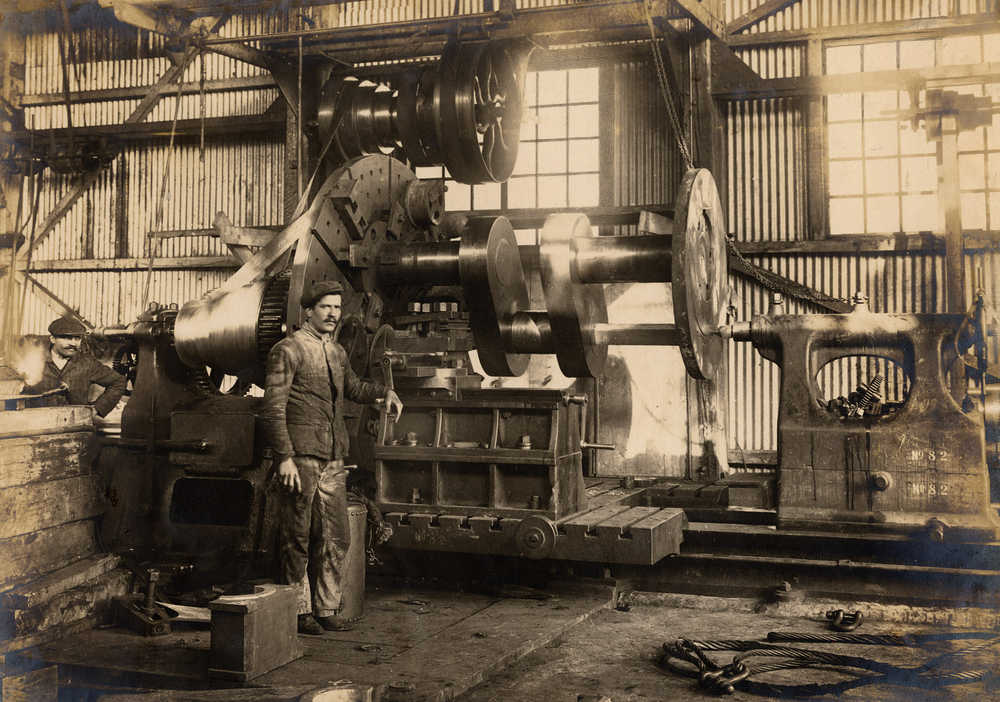
It is at this point, 1908, when the Monfalcone shipyard produces its first ship, albeit seemingly unannounced, for the Cosulich Brothers, under the direction of Scottish engineer James Stewart, (former technical inspector of the Austrian Union of Navigation), and chief engineer, Andrew Munroe. With the two Scottish Engineers came two hundred skilled workers, arriving from the United Kingdom to complete the Iron & Steelwork
(Carnemolla, S.E. “Monfalcone, history of a shipyard” Online Resource: https://doi.org/10.4000/diacronie. 2584 Accessed 21/10/2021), although the riveters were said to be local Istrians, and the carpentry was carried out using local tradespeople too. When it comes to recorded detail of the early ships out of Monfalcone Yard, there is scant detail available, despite research requests to the archives of several of the local sources in Italy the only record of the named ships produced in those first years at Monfalcone (Carnemolla, S.E. “Monfalcone, history of a shipyard, 2. The first passenger units” Online Resource: https:// doi.org/ 10.4000/ diacronie. 2584 Accessed 21/10/2021) are:
“Between the spring and summer of 1908 the Trieste and the Split were set on the ports, two mixed steamers of 896 GRT ordered at the Shipyard by the Società Anonima di Navigazione a Vapore Dalmatia”
And:
“In 1909 it was the turn of the Nereide, a cargo steamer of 3,405 GRT for the Tommaso Cossovich Società Anonima di Navigazione a Vapore of Trieste”
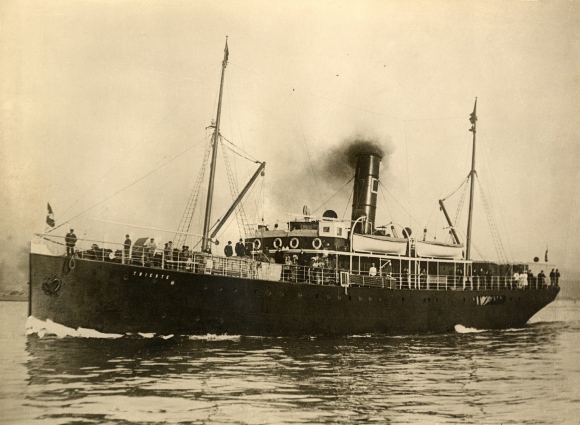
Now the only conclusion that seems reasonable as the two “…. set on the ports, two mixed steamers of 896 GRT….” noted to be during spring/summer of 1908, which means that Brioni could have only followed them shortly after, as Brioni was launched in 1909 out of the Monfalcone yard and, seemingly, without either fanfare or mention. I had thought it a reasonable assumption, in the circumstances, that the Brioni was, to use the expression, “set on the ports” either late in 1908 or very early in 1909, I was lucky enough to receive confirmation from Signor Nereo Castelli of the Associazione Marinara Aldebaran in Trieste, that the actual date for the Brioni Order was 12th of July of 1908. A little further digging did surface a series of documents from the museum at Monfalcone and their archivist who chose to remain anonymous under the admin banner “Amministrazione Posta Elettronica Beniculturali” but to whom I extend my gratitude for the wonderful documents sent on, only some of which are used here
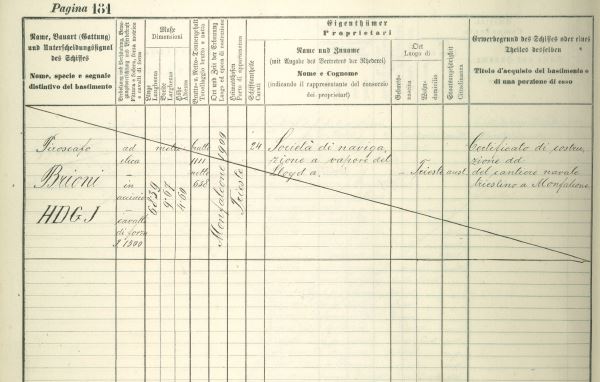
The certificate and documents of registration for Brioni, built and registered to the Cosulich Brothers subsidiary, the Società Anonima di Navigazione a Vapore Del Lloyd. It is clear that the fortune of the Cosulich brothers was still in the ascendancy at this point, Stefania Elena Carnemolla goes on to throw a focus on the future ambitions of Callisto and Alberto:
“In 1910 the Cosulich obtained from Vienna a state subsidy agreement for the shipping line with Argentina. It was in this context that the Kaiser Franz Joseph I was born, a passenger steamer of 12,567 GRT for the Austrian Navigation Union. From the traditional and elegant external line, bow to tagliamare, slightly inclined, elliptical stern, central formwork surmounted by two large chimneys, subsequently lowered, the Kaiser Franz Joseph I, with three classes, was launched on September 9, 1911 in the presence of Maria Gioseffa and Massimiliano, archdukes of Austria……”
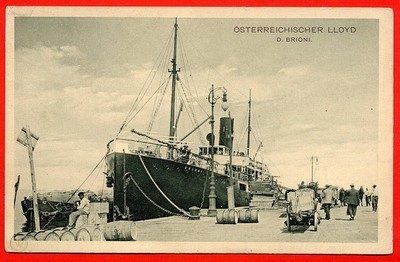
Perhaps the Brioni pretty much slipped under the Radar in 1909 because Callisto and Alberto had bigger concerns, perhaps the opportunities of the coastal Adriatic trades were wearing a little thin by now, perhaps, as the Austro-Hungarian Empire seemed about to expand its horizons beyond European shores? Nonetheless, the Brioni was launched 12th of February 1909 and fitted out at Split between then and the 12th of May of 1909 and, again, there is little if anything to announce her launch. Whatever the reason, the Brioni continued her humble path through to the Levant and served the Consorzio di Navigazione a Vapore of Trieste well, carrying passengers and cargo along the Adriatic coastal routes, from Trieste to Pula and Split, even to Brioni itself perhaps……
For those of you obsessed by detail;
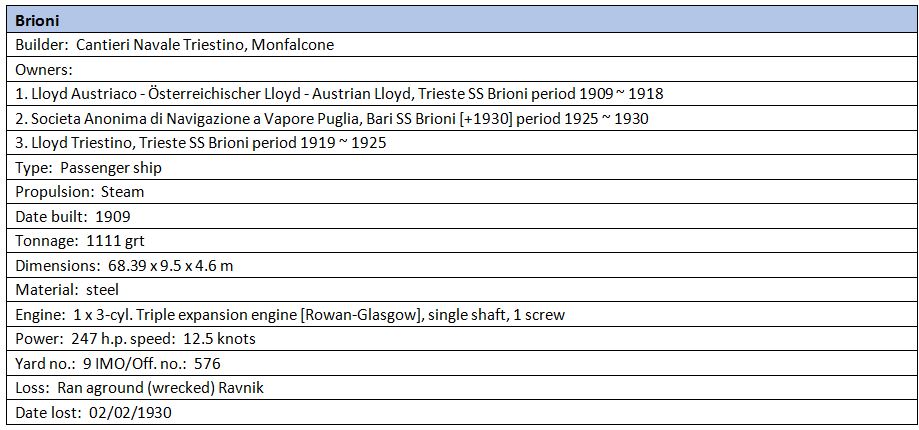
The original documents held in the Trieste Maritime Archives are far more interesting to anyone with a love of the arcane, and a connection with those yellowed and handwritten entries, buried, deep, in the ledgers of companies long since faded from the memory of most of the world, but still there, a tenuous and wonderful connection with the colossal empires which, when they clashed, brought half a world to its knees…….
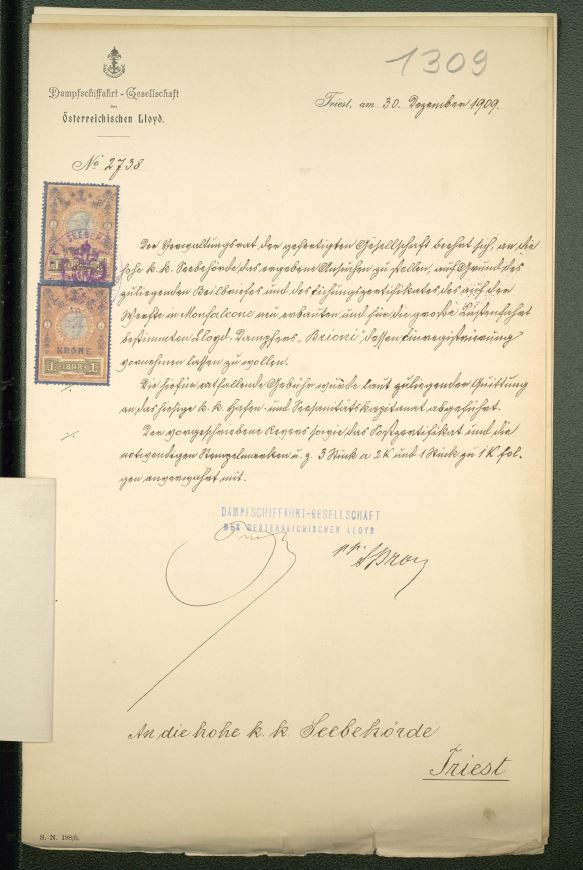
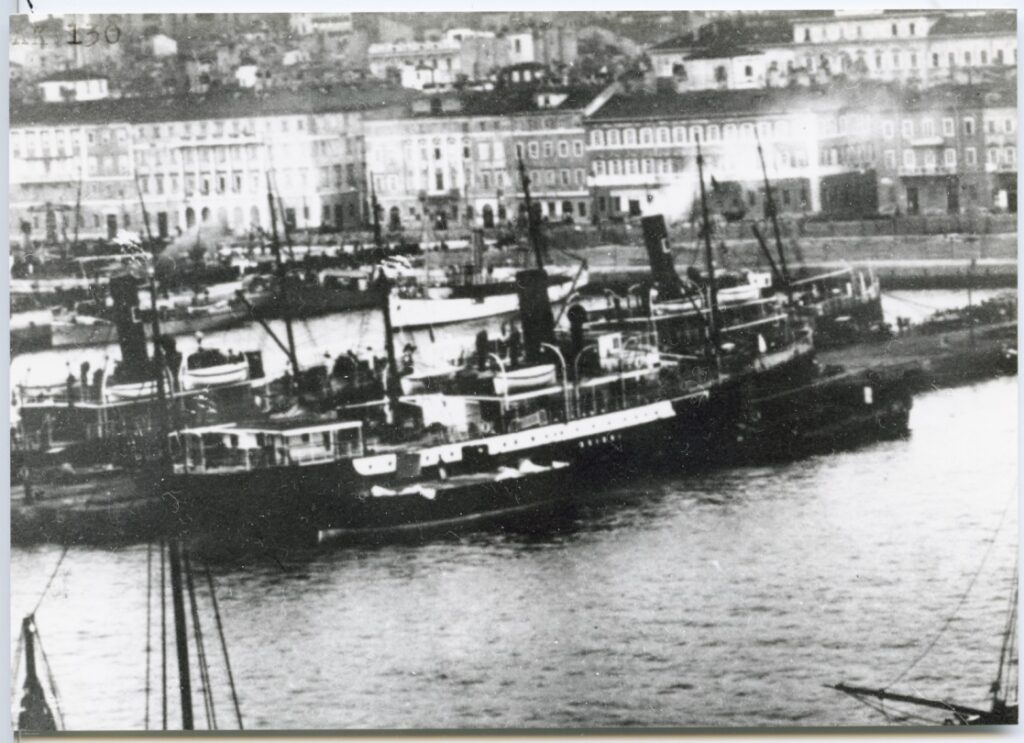
There are some details which allow a wider view of Brioni’s career between her launch and her loss in 1930 and I am very grateful to the former archivist of the Museo del Mare in Trieste, Signor Stelio Zoratto who provided me with the information available for the known movements of the Brioni, these are hardly a comprehensive lexicon for a ship carrying out two or three journey’s a week for some 21 years of service however many of the records for the Osterreichischer Lloyd company and her various iterations, Lloyd Austriaco, Societa Anonima di Navigazione a Vapore and Lloyd Triestino, were held in archives heavily bombed during the second world war, although there are bound to be more detailed accounts somewhere in the Austro-Hungarian libraries and various official halls of records. It would probably require an Italian or German national, with a great deal of time on their hands, in order to uncover more than I have managed, between the various museums and maritime archives I have been privileged to have the assistance of for this piece:
Museo del Mare, Trieste Records:

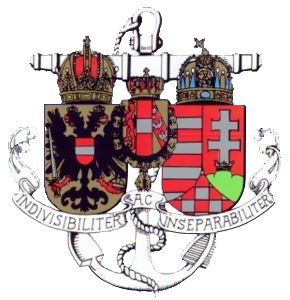
The Arms of the Austro-Hungarian Navy 1867-1918 (Web Illustration: Courtesy Wikipedia)
There is a brief mention of the 08:1914 “Seetransportleitung” requisition buried in a piece about the Hungaro-Croatia Sea Steamship Co Ltd (1892-1921) which references two “older steamers” one of which, by the Museo del Mare account, is very likely to have been the Brioni (Horvath. J “Hungaro-Croatian Sea Steamship Co. Ltd. (Ungaro-Croata), 1892-1921” On line resource: https://hajoregiszter.hu/tarsasag/tengeri/magyar_horvat _tengeri_gozhajozasi_rt__ungaro-croata_/ 46?nyelv=en Accessed 23/10/2021) “Fortunately, the Seetransportleitung set up in Fiume did not make use of this possibility at once, only two older steamers capable for troop transport were employed between Fiume and Pola and only until the end of the year” as this is a 1914 reference it is difficult not to associate the event and the Brioni, even though she is not mentioned by name specifically. The piece would seem to confirm, in conjunction with the information on the data sheet from Signor Stelio Zoratto, that Brioni played her part (however small), in the Austro-Hungarian war efforts of World War I, carrying troops and, from the second entry, perhaps even munitions & mines in 1914, and then again after a period “Disarmed” from 1914 to 1916, at which point she was again requisitioned as a troop transport for the Austro-Hungarian (“A.U”) Army
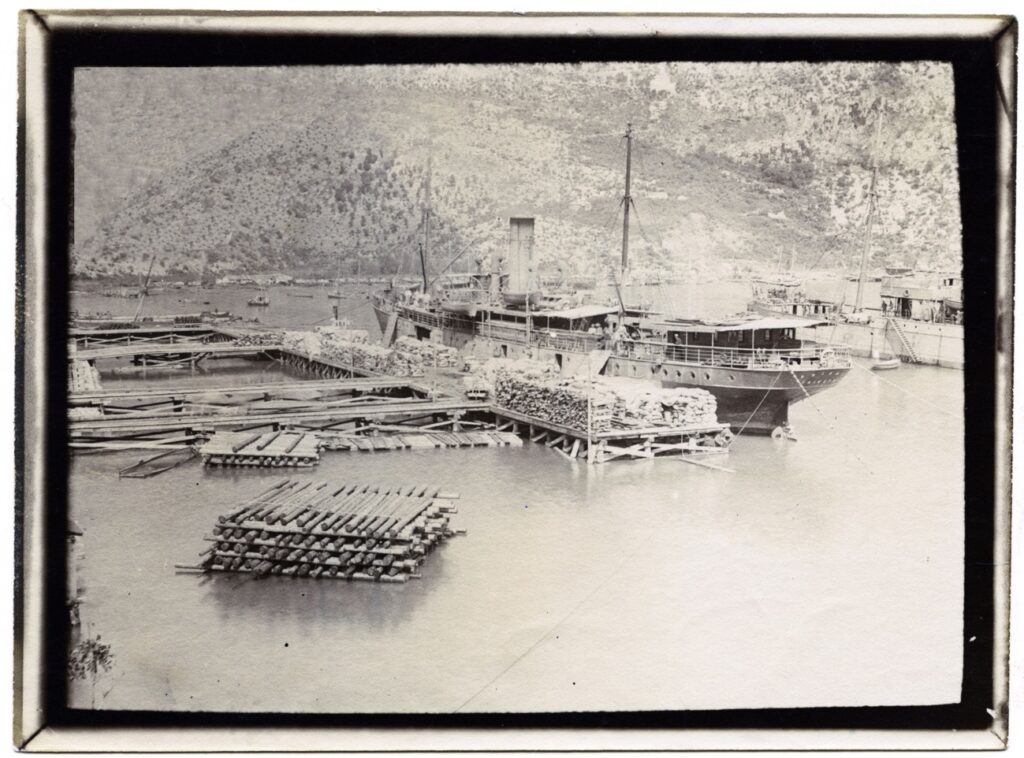
I dived Brioni in July of 2019 on a second dive trip to Viz, I had the remains of the tri-mix I’d used on the B17 there the day before and had it topped off to dive Brioni. By now I had filled the Green Navy dive-log I had started all those years ago in 1990 and was on a nice and similar hard back from Log-it, so from now on it’s the “Blue Log”…..and it records: “17/07/2019 Brioni Komiza Croatia BRIONI a steamship @ 100m approx.. this had been a luxury transporter carrying both cargo & high end luxury passengers. Lost in a storm with no known explanation (nav error?) The wreck is on it’s Port side & beautiful! Covered in Yellow gorgonians but still carrying wooden planking in places this dive started at the stern & prop down the centre of the hull with more time would’ve meant spending time in penetration. I could spend a week on this wreck it’s just magnificent – must do it again!!”
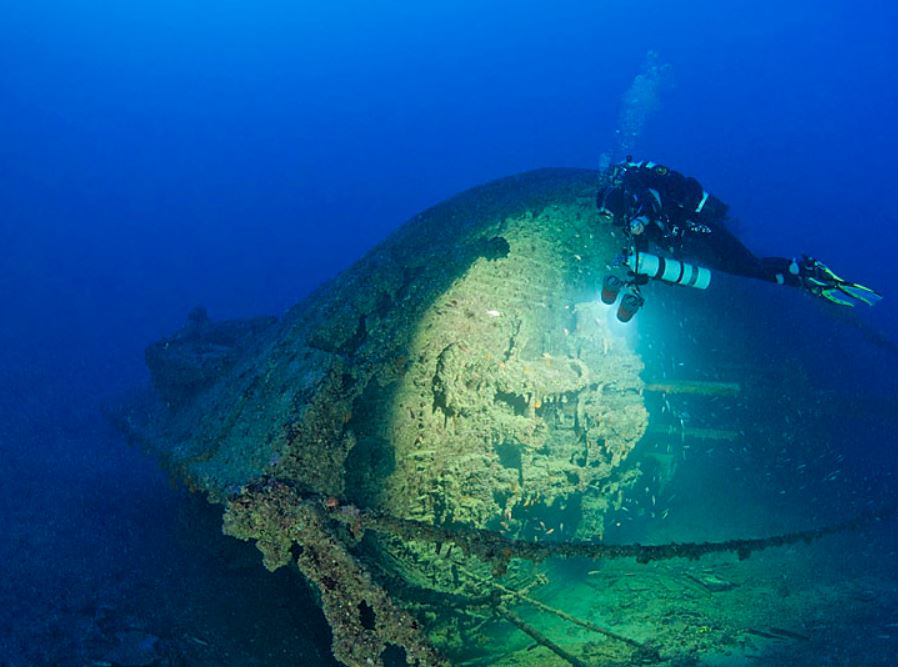
I had no idea the Brioni was going to be such a beautiful wreck, the Island of Viz is truly blessed in ship and plane wreck terms and I never tire of going back. I planned another couple of dives on Brioni this last year (2021) but illness put paid to the dives even though I got to Komiza, I will again return next year God willing, the call of Brioni is strong. I also have unfinished business on Brioni as the Go-Pro failed me for some reason and the dive taken didn’t record. Brioni is dived in an unusual manner by local dive centers, I use Manta, Andi Marovich, the owner, is a friend and Aniska, Andi’s sister, is not only a friend but a great diver and host too, it is always good to return, and know you are supported by professionals

The Brioni was a surprise, we were dropped off at her stern, the shallowest part of the wreck, as mentioned in the dive log entry, and this seems to be the local “norm”, where UK dive centers would drop you at the deepest point of the wreck as a matter of course. My comment in the dive log is confusing, written in haste, and should read “….more time in penetration would mean more time in decompression”. The Brioni’s stern is her shallowest area, the shelter deck at around 45m and her prop around 50m so my dive began at 45m and the swim down Brioni’s hull, at 70m long, is a considerable one, when you consider you are descending from 45m down to the sea bed at her bow at close to 65m. I had no desire to swim her quickly, and took time to enjoy the Starboard run along her and all the life she has attracted since her sinking in 1930
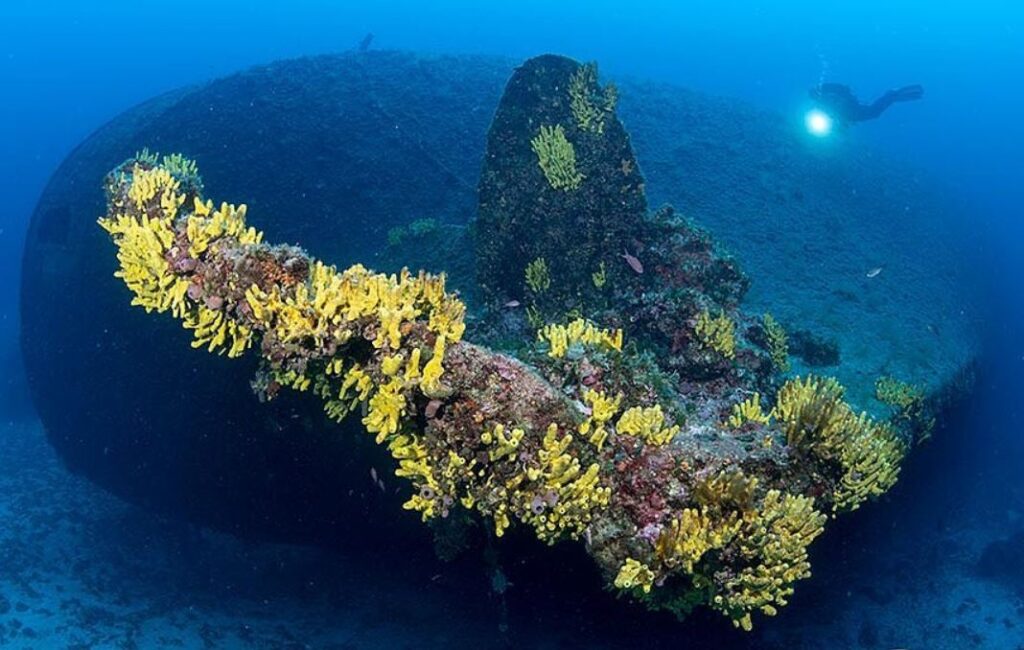
Getting to Brioni’s bow and turning the dive you cannot help but be taken by the sight of beautiful Yellow sponges all along the wreck, wherever you look they catch your dive lights and make a marked contrast to the deep blue of the Adriatic framing the wreck’s outline. Franco’s shot of the Brioni’s stern shows how pretty the wreck is in terms of the marine life, and there are plenty of fish around her too, depending on the time of year. I have a general rule that I will not penetrate a wreck on my first dive on her, no matter what, Brioni was no exception, I was running slow and enjoying the view, my gas was doing fine and deco was not going to be extensive at around 20 minutes half way back, but the Brioni is one of those wrecks you need to get inside, I cannot wait to dive her again, next summer cannot come quickly enough!
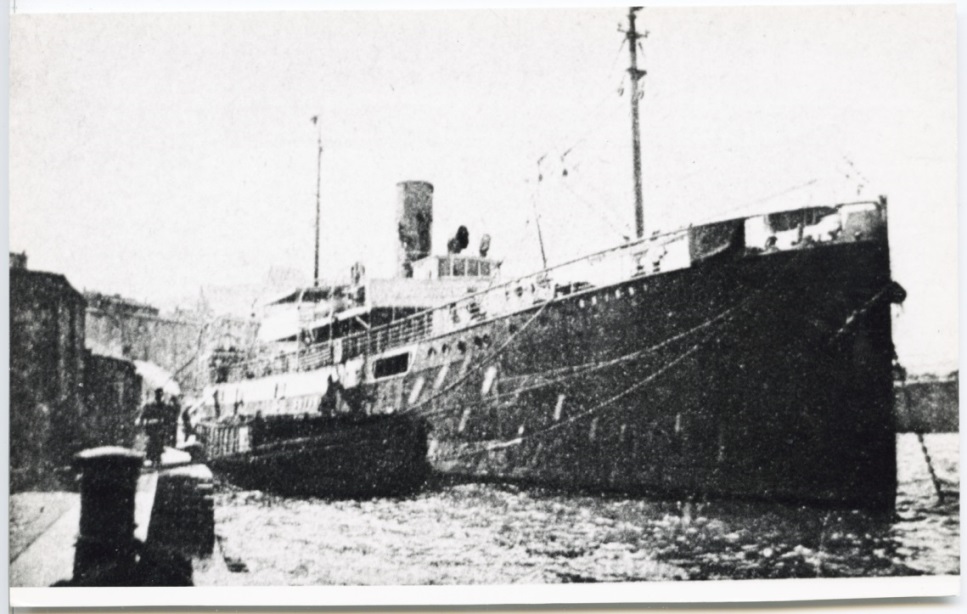
Brioni had already been aground once before her destiny finally caught up with her, on the night of the 16th of February of 1917, at the height of the First World War. Brioni grounded at Gallon Rock near the island of Veglia, the Austrian Navy tug SMS Herkules eventually managing to get her afloat a couple of days later (when her cargo had been lightened), on the 01st March of 1917

The Brioni was towed to Fiume (Modern Day Rijeka) for repairs and then, after a month, in April of 1917 she transfers to Trieste and resumed service between Albania and Trieste, presumably carrying supplies, munitions and troops, before falling into the hands of the Allies following the end of the war in 1918. Brioni would see another 12 years of service between Trieste, Sibenik, Ancona and Split from 1919 and then Trieste to Albania in 1921, before taking a charter to the Puglia SA Steam Navigation line, the South Eastern heel of Italy where the Brioni covered journeys to and from Venice, Trieste, Pula, Lošinj, Dalmatia, Albania, Bari, Corfu, Preveza and Santa Maura
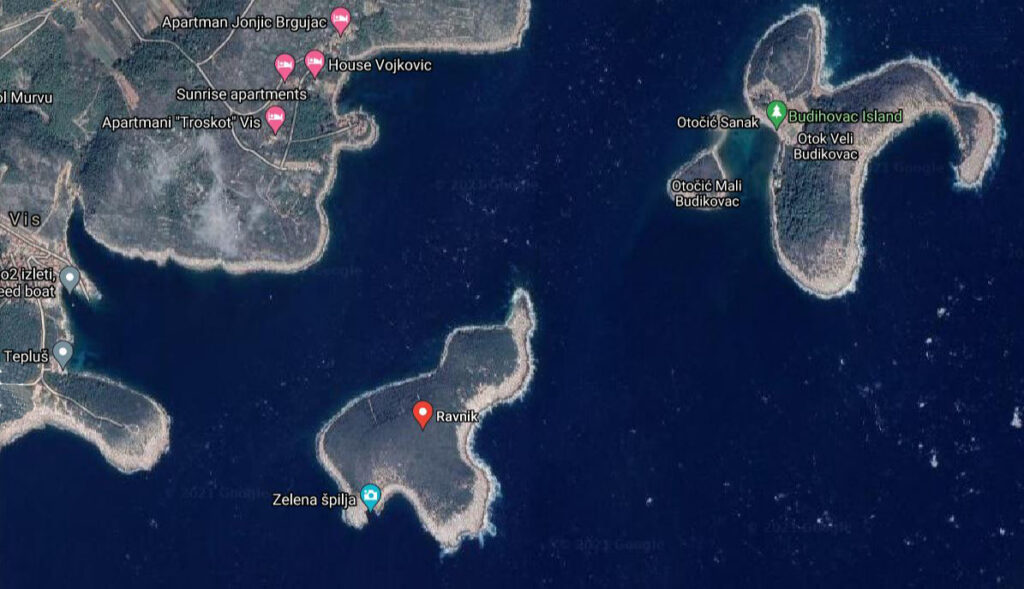
It would be on one of her journeys between Split and Vis, carrying a cargo of wine and tobacco, that Brioni went to the bottom of the Adriatic off the islet of Ravnik, Cape Jezera, in poor weather and having clearly made a navigational error, putting her “on” instead of between the Vis headland at Teplus and Ravnik or the islets of Mali Budikovac and Ravnik. There were two lives lost on that awful evening, there is no mention I can find of the two who went down with the Brioni, however, just a couple of months ago Andi took divers into Brioni and, on surfacing, one of them asked if there were still human remains on her, as he believed he had identified a human vertebrae in her engine room. The diver was a forensic anthropologist, which puts him in a fairly good professional position to comment, he had left the bone where it was out of respect, however Andi did not manage to find it on a later dive. Being found in the engine room, it would indicate the two lost were stokers, perhaps the last to know the ship was sinking in such circumstances and, deep enough in the Brioni that if she foundered quickly, might have found their route to the upper decks difficult to say the least
In Memory of Those Souls Lost on the Brioni 09th February 1930
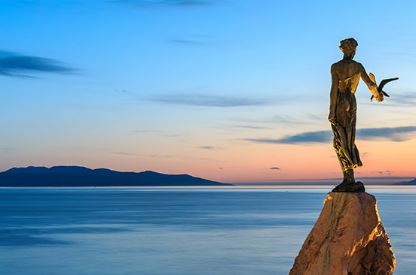
I am, as always, deeply indebted to those who helped me with this piece: Dr Claudia Morgan (Retd) formerly of the Musei di Storia ed Arte di Trieste, Signor Stelio Zoratto (Retd), former librarian of the Civico Museo del Mare Trieste and his colleagues & researchers Signor Nereo Castelli of the Associazione Marinara Aldebaran in Trieste and Signor Mario Cicogna, Giuseppe of the reproductions dept. of Bibliotecami, and the unknown archivist at [email protected]
I am especially indebted to my occasional dive buddy, and stellar international photographer, Franco Banfi and to our hosts and friends Andi & Aniska at Manta Divers, Komiza, Viz
2022 Update:
I managed to return to Viz in August of this year and carried out a series of dives with Andi, Aniska & Manta Divers. I could not have passed over the chance to dive on Brioni again and make up for the missing video of the 2019 trip……..My Blue log book describes the dives:
“31/08/2022 BRIONI KOMIZA The Brioni – My favourite Viz wreck (ship) & one I wrote up extensively on the blog. This steamer lies bow down @ 60m & we had to swim for 7 or 8 minutes to find her & descend. I spent a run down her deck to her bow & filmed her Anchor then swam her decks back to the stern & round to her prop, a wonderful 20 minutes – on to her safe & back up to deco on the rocks she ran into – a marvellous dive with Coral, Anemones & fish everywhere“
Take a dive on the Brioni with me, this is a run down her hull to the bows, back to her stern & then a little deco
Or you can check out the No 2 hold and Bridge Superstructure and then deco with some friendly Fish Shoals if you prefer?
The second dive on her: “06/09/2022 BRIONI – Back to Brioni to round off the holiday diving! Dropped in with a short swim to do to reach Brioni! I was after filming her bridge area @ 50m or so & managed to drop in & achieve that. A short swim into No 2 closest to bridge) hold & a look round for future runs. I think you can run all holds as 1 run but need to confirm that Stayed in & around the bridge for 15 minutes then up to deco with pretty shoals of small & medium fish Brilliant Dive!“
